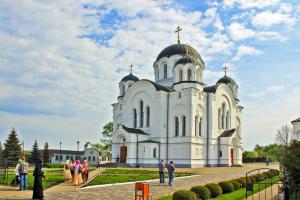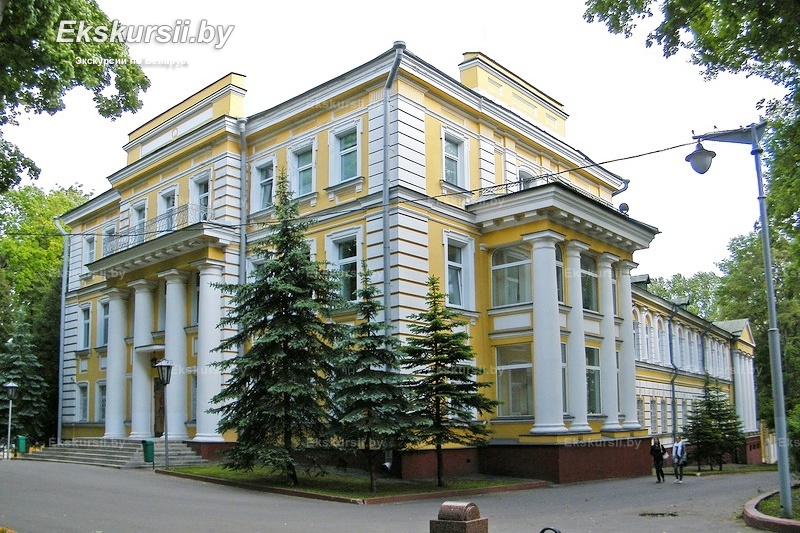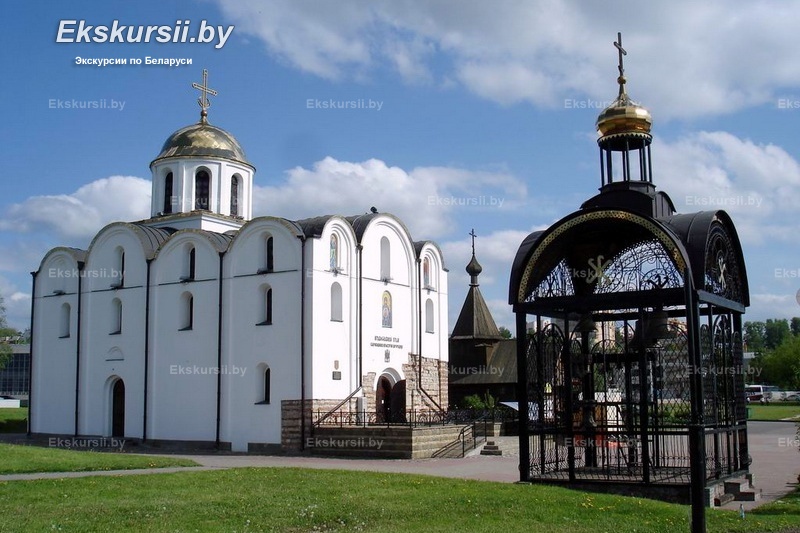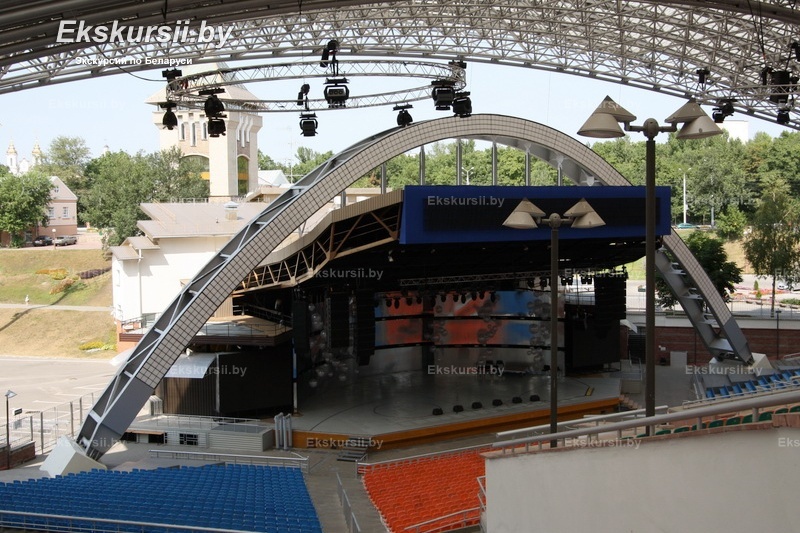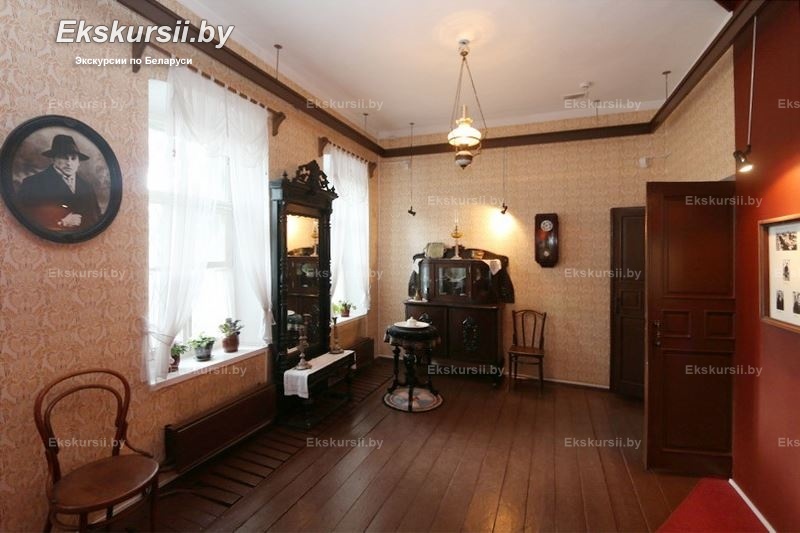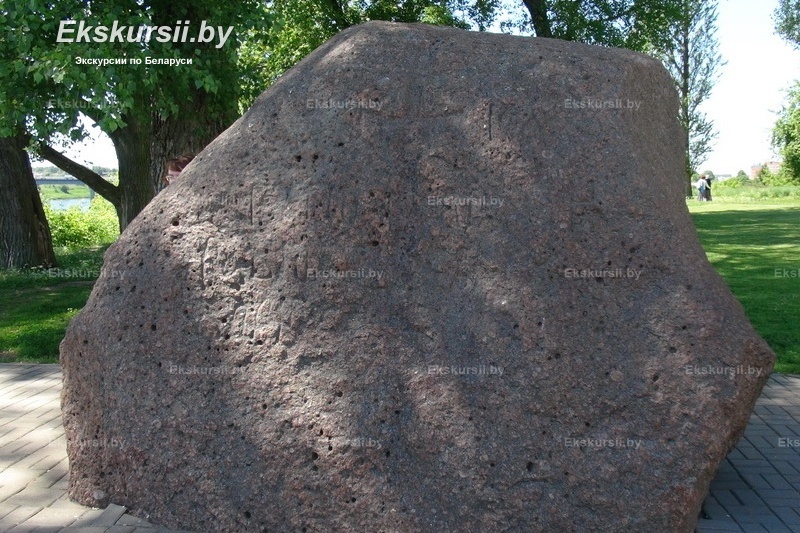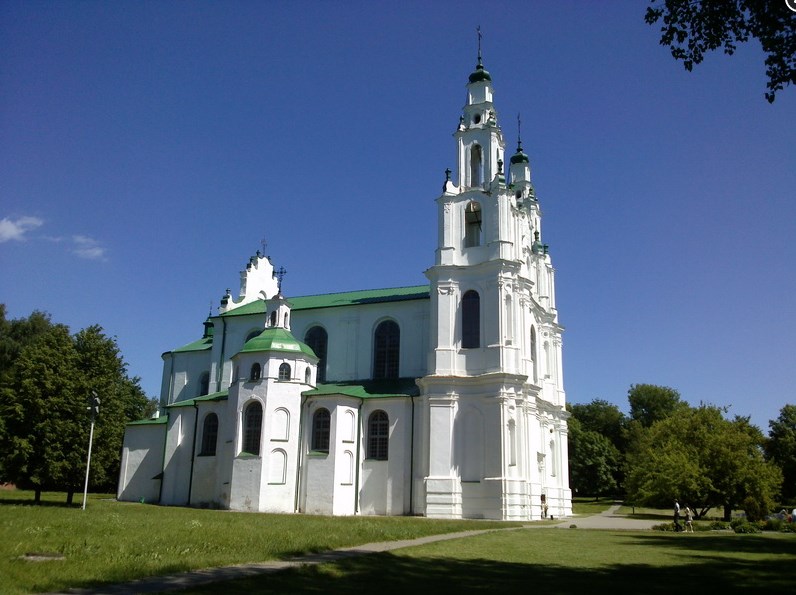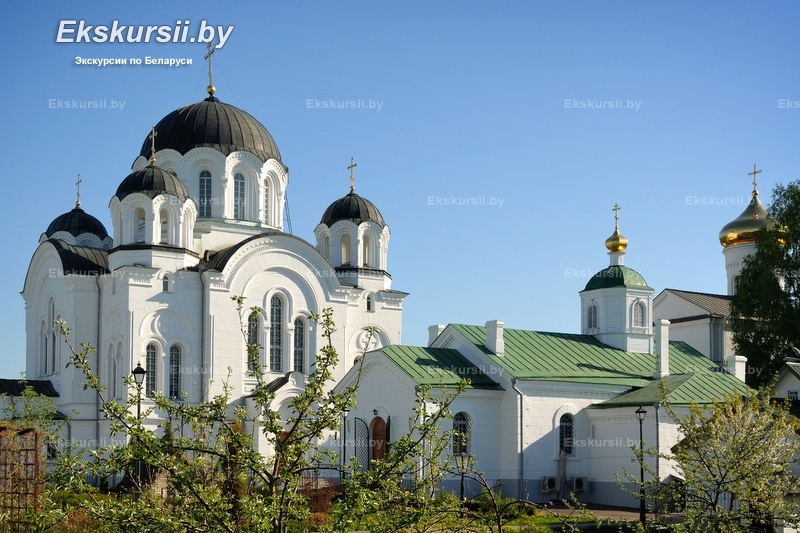Search
Vitebsk - Polotsk (2 days)
Tour descriptionPrice
per person
11'535 ₽
5'998 ₽
The cost of excursions is approved in Belarusian rubles and when paying in other currencies the final cost may differ from the one indicated on the site depending on the exchange rate of the card issuing bank (MIR, Visa, Mastercard).
Included in the price of the excursion:
- excursions according to the program
- meeting/seeing off at the train station
- certified guide services
- transport services
Description
The tour will start in Vitebsk - the city of Marc Chagall. Domes of temples, ancient streets, miniature houses, ribbons of wooden fences and cabmen forever remained in the canvases of the artist. You will see all the stories with your own eyes. The next day you will meet with the city-patriarch Polotsk, where our culture and traditions were born. The history of ten thousand years is preserved by Polotsk Sophia, Borisov Stones, ancient monasteries and legends.
Excursion type
Local history
Distance
280 km
Duration
2 day
Language of training
Russian
Excursion subject
Kind
Bus tours
Program
day 1
Breakfast
Palace of governor
The palace of the Governor decorates Zapadnaya Dvina Embankment from the second half of the 19th century. The beautiful Palace Square became the favourite place of citizens from the moment of the emergence – it was not similar to others. Force and tranquility of the palace were in harmony with small benches along Dvina, the streaming water of the fountain and wind music reaching from the palace. And it reached often, receptions and balls were not a rarity – it becomes obvious if to remember some guests and inhabitants of the palace: шляхтич Kudinovich, brother of the empress Maria Fyodorovna duke Wurtemberg, Napoléon I, Nicholas I's brother prince Konstantin Pavlovich, writer and first Russian historical romantist Ivan Lazhechnikov. And at the beginning of the 20th century the most famous American Isadora Duncan danced here. We suggest to see the palace and to you.
Church of the Annunciation in Vitebsk
Annunciation Church – one of the oldest in Vitebsk, so, for certain, kept something unusual and unique that you and should learn. There was it in the 12th century as the embodiment of Old Russian architecture. Also the architecture of the temple which more than once is already reconstructed owing to time and events, and an original laying of "the drowned row" - used only in 2 temples of the world – in Vitebsk and in Constantinople is interesting.
Vitebsk City Hall
The Vitebsk town hall – a fine monument of architecture and an example of a combination of two refined styles: baroque and classicism. A town hall – a symbol of the city which keeps the memory of times of independence and self-government granted with the Magdebourg right. She organically fitted into ensemble of the historic center of Vitebsk which draws attention with a set unusual the embodiments of an architect thought.
Cathedral of the Assumption in Vitebsk
In the middle of the 18th century on the high Uspensky mountain that contains a minimum of 1000 of existence, monks to the baziliyena built the stone temple, on the place of former wooden. Time is ruthless – it was repeatedly destroyed and changed. Restoration of initial shape is complete recently - in 2011. And now Assumption Cathedral as if floats again over the city and the river – its domes are visible from all corners of Vitebsk, and also the ring of the biggest bell in Belarus is far heard. Only the beautiful twisting ladder connects it to the earth.
Victory Square in Vitebsk
In view of events of the II World war – there is a lot of memorial complexes devoted to it in Belarus. Vitebsk did not become an exception – here the biggest square in Belarus – Victory Square reminds of events of those years. Efforts of remarkable architects created unusual and very solemn complex which includes the composition "Three bayonets" with bas-reliefs reminding "Kurgan of Slava", the Eternal flame, 2 pools with fountains, thematic sculptures and the system of illumination which creates the special atmosphere at the Victory Square in the evening.
Church of St. Barbara in Vitebsk
Amazing church of Saint Varvara (Barbara) – one more diamond of architecture of Vitebsk which appeared here at the end of the 18th century. Use of a red brick and combination of refined styles: baroque and neoromance – create the unique image of the temple. Reserved and monumental, strict and a little mystical it attracts all eyes of passersby and definitely costs your attention.
Lunch
Summer Amphitheatre
Summer Amphitheater – the main concert venue of the international festival of arts "A Slavic market in Vitebsk" since 1992. The open concert hall instantly won popularity among performers. From the first "A Slavic market" it became the main concert venue of a festival. For quarter of the century, namely it was executed to an amphitheater so much, its stage was visited practically by all famous performers of the CIS countries. The grandiose construction with the modern light and sound system developed by infrastructure is glad to both entertainment stars, and the audience, and fans of travel.
House-Museum of Marc Chagall
Vitebsk - the Homeland of the world famous artist Marc Chagall. Throughout all life of the master Vitebsk was a perennial spring of inspiration. Domes of temples and ancient small streets, tiny houses and shops with signs, tapes of wooden fences and carriers on streets forever remained on picturesque cloths, together with its well-known angels and lovers soaring in the sky … Marc Chagall's museum will open for you pages of life and works of the artist.
Art Center of Marc Chagall in Vitebsk
Geography of places associated with the name of the artist Marc Chagall, is very wide - France, Switzerland, Germany and Britain, the United States and Israel. Painting the ceiling, «Grand Opera» in Paris, stained glass windows in churches in Mainz, Zurich and Tyudli, in the synagogue in Jerusalem, mosaic panels for the National Library in Chicago, thousands of paintings and graphic works that are now in different countries on different continents. During his lifetime, the length of almost a century, Chagall became a real «citizen of the world». His work is close and understandable to people of different nationalities and faiths. However, it was in the life of a great artist town, memories of which he carried through his life, - Vitebsk. That have remained in the city, You also will examine those works in Marc Chagall's Art center.
Transfer to the hotel. Check in
day 2
Breakfast
Check out
Moving in Polotsk (110 km)
Сomplex of Jesuit collegium in Polotsk
Jesuit коллегиум in Polotsk – the first Jesuit educational institution in the territory of modern Belarus. Thanks to teaching only in local language, to high education level, big library and laboratory, the number of students increased from 5 to 450 people. The richest коллегиум was the cultural and educational center of the Polotsk lands and received the high status of academy where 700 people studied already. Here continues the existence tradition of education – in an architectural monument of Baroque style the Polotsk State university was located. In a kollegiuma the exposition "Reconstruction of the project of Gabriel Gruber "The mechanical head is open" - it is executed in Socrates's image and is ready to answer all your questions in 5 languages.
Borisov stone
Someone sees in them memorable signs of the prince, someone boundary marks or track signs, someone entreaty about the help – but all of us understand that it is unique and remarkable witnesses of legendary events which occurred tens centuries ago. It is about the whole series of huge stones – boulders - with the cut signs and any inscriptions – you will see one of them. The stone which has received the name Boris is brought to the Polotsk Sofiye and majestically welcomes guests. And on him an inscription "Jesus Christ. My God pomoz to the slave Boris".
Epiphany convent in Polock
The Polotsk earth long since is famous for the history, social and religious life. Among other witnesses there is development of religion in the city, pilgrims Sacred and Bogoyavlensky Polotsky attracts the monastery. For 5 centuries of existence he repeatedly burned and burned down completely, was reconstructed and received guests of honor. At the end of the 18th century he was visited by Catherine II then it noticeably changed – the two-storeyed big case was completed. Today in it the Museum of the Belarusian publishing and the museum library of Simeon Polotsky who taught at brotherly school before went in Moscow to train Ivan, Sovyyu and Fedor – children of the Russian tsar Alexey Mikhaylovich is located.
Saint Sophia Cathedral in Polock
From what party you wouldn't drive up to the city – you will see a majestic and graceful baroque silhouette of the Polotsk Sofia. Have built the most ancient Christian shrine and the first stone temple in Belarus, one of the earliest in Ancient Russia 10 centuries ago - the copy of the Byzantine monastery. Now, from initial shape, only the crypt, three apses, a part of internal columns and finishing of the base have remained. Today St. Sophia Cathedral - the first representative of art who has incorporated lines peculiar to the Polotsk earth. Church services are stopped even here at the beginning of the 20th century: now it is the unique museum and one of the best concert halls of Europe where you will hear fine body or chamber music.
Lunch
The Savior and St Euphrosyne Convent in Polotsk
The young beauty – the princess who decided to become contrary to will of the father the nun, and in a consequence the mother superior of convent, the first in the territory of Belarus, – Euphrosyne of Polatsk. Exactly thanks to it in Polotsk there was a Spaso-Evfrastiniyevsky monastery, and in it a spiritual symbol "Zyaml_ Stalemate Belym_ Wing _" - an invaluable cross of Eufrosinia. The orthodox convent is built 9 centuries ago. Its first temple – the Spaso-Evfrosiniyevsky church decorated with the most ancient frescos – was built only in 30 weeks and became the best, from the remained constructions, an example of drevnepolotsky architecture.
Museum of Medieval Chivalry
Since the time of Prince Vseslav Charodey, according to chronicles, our ancestors were determined by power, agility, endurance. It was from those times the fame about our knights spread throughout Europe. "Heart to the Fatherland, honor to no one!" - these words were the motto of the Belarusian knights who traveled along the roads of Europe, performed feats in honor of giving their heart and Fatherland. Where did the first knights of our lands appear? Of course, in the first principality - Polotsk. Therefore, here, in Polotsk, a descendant of the ancient Rurikovich family, a unique exposition is created that will acquaint you with the amazing and fascinating history of medieval chivalry, with the laws of valor and honor, with types of armor of different times and with types of medieval tortures. And the atmosphere of a medieval castle will help to plunge into history, forgetting about everyday hustle and bustle.
Transfer to the railway station
Moving in Vitebsk (110 km)
Transfer to the railway station
The end of the tour
